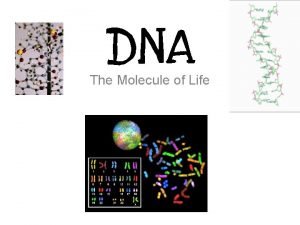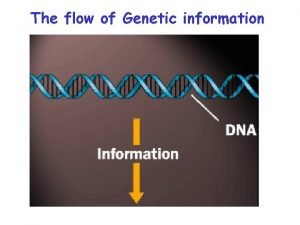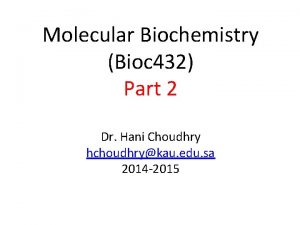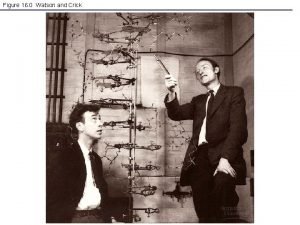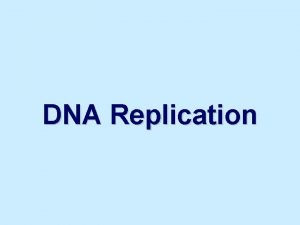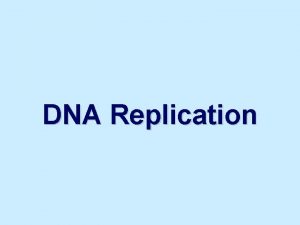5 3 DNA Replication Why DNA Replication The









- Slides: 9

5. 3 DNA Replication

Why? DNA Replication • The DNA molecule’s most crucial task is to provide the information necessary to lead to the production of proteins • Must make EXACT copies! • Why? All cells need the same copy of DNA when they divide • This process is called DNA replication-happens during S phase

Semi Conservative: • Replication produces two copies of DNA, each that contains one original strand one new strand

Replication Origins • Can occur directionally or bi-directionally • Creates a replication fork to expose nitrogenous bases • Bi-directionally greatly limits time required for DNA to replicate (faster)

Leading/ Lagging Strands • Leading continuous • Replication occurs in one fluid motion • Laggind discontinuous • Replication occurs in chunked segments that will later have to be joined up

DNA Replication Key Players Enzymes: DNA replication is carried out by a complex system of enzymes. (4 major ones) Helicase “zipper” Polymerase “builder” Primase “Finish line” Ligase “glue”

Major Enzymes cont. 1. Helicase: Unwinds (unzips) and separates double strand DNA by breaking hydrogen bonds b/w bases 2. DNA Polymerase: makes new strands from the original template strands. (adds nucleotides) 3. Primase: indicates when replication needs to stop 4. Ligase: joins the original DNA and the new DNA together

END GAME • At the end of DNA replication there will be 2 exact copies of DNA so that a cell can finish out the cell cycle

DNA Replication Steps/ Overview 1. Helicase untwists and unzips DNA double helix, exposingle nitrogenous bases. 2. Free nucleotides will begin to find their complementary bases on the original strand that is now open. 3. DNA polymerase “builds” or constructs the free nucleotides into a new DNA strand based on the template from the original DNA strand. 4. Primase will give the signal to end Replication and Ligase will begin gluing the original strand new strands together basically forming new H-bonds.
 Bioflix activity dna replication nucleotide pairing
Bioflix activity dna replication nucleotide pairing Dna polymerase function in dna replication
Dna polymerase function in dna replication Dna rna protein synthesis homework #2 dna replication
Dna rna protein synthesis homework #2 dna replication Why is dna replication considered semiconservative
Why is dna replication considered semiconservative Hey bye bye
Hey bye bye Haploid vs diploid
Haploid vs diploid Dna stand for
Dna stand for 3-5 exonuclease vs 5-3 exonuclease
3-5 exonuclease vs 5-3 exonuclease Okazaki fragments
Okazaki fragments 3 models of dna replication
3 models of dna replication






